With the exception of a few rare exceptions, almost all electronic systems have at least one clock function, which is no longer news. In most cases, this clocking is accomplished by using a quartz crystal plus an associated oscillator or clock generator IC. This basic implementation provides a single, fixed frequency output, as shown in Figure 1.
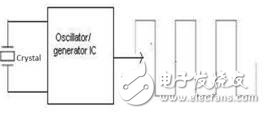
Figure 1: In a basic clock generation scheme, a quartz crystal and an oscillator/clock generator IC are used to provide the required timing signals.
If all that is needed is a single clock output, the implementation of the clock subsystem will be very simple. But for today's complex electronics, a single clock is not enough. Most products require several different clocks for various external connection interfaces (such as Ethernet, PCI, RapidIO, USB ports, etc.). Several clocks are used for internal functions (a system processor and specialized subsystems).
To provide all of these clocks that are not related to each other, the obvious solution is to use multiple crystals, each with its associated clock generator. This approach is technically possible, but it is not attractive because it leads to many problems, such as the need for larger printed circuit board space, board layout challenges, complex bill of materials (BOM), and cost. and many more. As a result, in addition to some very special cases such as scientific instruments, the clock must meet extreme or unique index requirements, and the above method is not feasible.
A better solution that people prefer to use is to use a multi-output clock generator that provides multiple uncorrelated frequencies from a single crystal from one IC, as shown in Figure 2. This approach overcomes many of the problems associated with using multiple pairs of crystals and clock ICs because it requires only a single crystal and associated clock generator to generate all independent clocks for the system.
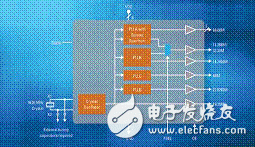
Figure 2: A typical product design requires a clock array that is unrelated to each other, spanning a wide range of frequencies and signal formats. These can be easily achieved with a single crystal and multiple output clock generator IC.
Further, system designers can benefit from the use of a programmable clock generator. The generator does not produce a fixed output frequency, the user can set the output to the frequency they want according to the specific requirements of a product, or use the same clock generator IC in multiple products in the user's product line.
Using a single clock generator IC can of course simplify the BOM of the system, which has other benefits for the designer. Since they no longer need data sheets for other components and understand the details required for their normal operation, such as supply voltage details, layout criteria, output load parameters, various tolerances, etc., many design time savings can be achieved. In addition to the simplest integrated circuits, understanding these details is a natural part of the design cycle and is often inevitable. In the design cycle, the fewer ICs that are “unfamiliar†in the design and bill of materials, the shorter the time to market.
However, even with a programmable multi-output clock generator, external crystals are still a big problem. First of all, no matter how small the package size of the crystal, it will take up a lot of board space that is very valuable in many designs. In addition, as today's clocks reach GHz levels, very short distances between the on-board crystal and clock generator ICs can create potential noise and EMI/RFI (electromagnetic interference/radio frequency interference) problems, causing additional jitter, Skew and distortion to reduce the performance of the clock output. It should be noted that even though the crystal and clock generator are themselves "perfect", the final clock performance seen at the target load is affected by the PCB layout.
Finally, when crystals are supplied by different manufacturers, there is a problem of product performance consistency due to different production processes. There are many secondary detail differences in the crystal's indicators, which also affect their performance and interaction with each other, and often cannot be predicted. Therefore, crystals from one supplier may work properly, but the same crystals from other manufacturers may have "fine" characteristic differences that can change performance, which may become a major issue in manufacturing and production testing. problem.
Co-packaged solution
The solution to the problems caused by crystals and adjacent clock generator ICs is obvious, at least in theory: the crystal and oscillator ICs are placed in the same package, in close proximity (or stacking) of the oscillator IC. Recent advances in packaging technology have made co-packaging feasible and are widely used in multi-IC designs, such as integrated packaging of processors fabricated using one semiconductor process and memories fabricated using another process.
Obviously, placing the clock generator IC silicon on top of the crystal saves printed circuit board space. However, this integration technique was previously only available for single-frequency clock generators and does not reflect the benefits of providing multiple clocks with an integrated crystal and clock generator IC. In other words, if the problem of solving problems with the previous co-packaging technology is very limited, the problem caused by this limitation is greater than the problem it tries to solve.
[Note that some vendors are offering alternatives to MEMS technology to replace crystal oscillators. By using a MEMS-based oscillator circuit, a smaller, single-chip or two-chip co-packaged clock solution can be obtained. In general, the performance of these devices is sufficient for some applications, but not for all applications, and only for single frequency clock outputs. Therefore, even with MEMS oscillators, it still cannot solve the huge problem of supporting multiple outputs and programming]
Breakthrough in packaging technology avoids performance tradeoffs
Fortunately, there is now an alternative that eliminates the need to choose between a co-packaged, single-frequency clock generator and a separate crystal plus a programmable multi-output device. IDT's VersaClock5 family includes a variety of devices in which an integrated, co-packaged crystal is placed underneath a multi-output clock generator silicon. These integrated devices are packaged in a standard plastic package and have the same specifications as individual clock generator ICs. The footprint and 0.9mm (nominal) height are shown in Figure 3.

Figure 3: Several products in IDT's VersaClock5 family place clock ICs on top of a quartz crystal to form the same package, resulting in a single multi-output clock source and generator in a single package that is no smaller than a separate clock. The device is bigger.
Here we show a trade-off between functionality, performance, and performance by carefully analyzing a co-packaged device in the VersaClock5 family. 4 &TImes; 4mm 5P49V5935 devices can generate up to 4 independent output frequencies (up to 350 MHz in differential mode), each output can be configured as LVDS, LVPECL, HCSL or dual LVCMOS, each output is individually selectable The output voltages (1.8V, 2.5V and 3.3V) are shown in Figure 4, with four outputs with individually programmable output enable, slew rate control, and spread spectrum.
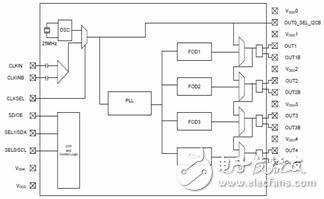
Figure 4: The 5P49V5935 features four outputs, each of which can be independently configured for frequency, output type, and other important attributes.
As shown in Figure 5, the 5P49V5935 device has less than 700fs RMS (root mean square) phase jitter to meet the very challenging requirements of standards such as 1G/10G Ethernet and PCI Express Gen 1,2,3. Meet the clock generation requirements of many widely used SoCs and FPGAs. Since the device's core current consumption is only 30mA, it does not consume higher power.
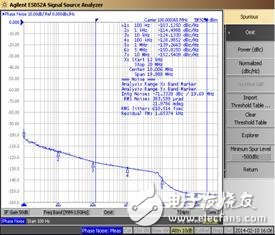
Figure 5: The jitter performance of the 5P49V5935 in the VersaClock5 family shows that there is no performance trade-off: jitter from less than 700 fs from 12 kHz to 20 MHz is comparable or better than standard solutions with external crystals.
When placing two high frequency components so close together (i.e., the quartz crystal and the clock IC in this example), the problem of concern is that performance may be degraded due to the subtle interaction between the two components, as shown in FIG. . In the case of the 5P49V5935 in the VersaClock5 product line, there is no negative impact, and its key performance indicators are comparable or even better than the two device solutions.
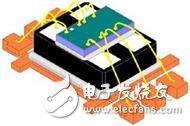
Figure 6: Due to advanced internal assembly and packaging innovations, there is no tradeoff in performance or size when using the 5P49V5935.
The integrated crystal IC with the VersaClock5 product family reduces board space and, of course, simplifies the BOM for a single product, especially for a range of product lines. There are also some hidden benefits to using the VersaClock5 product line, but it's also important. Integrated components such as the 5P49V5935 ensure performance when the crystal is paired with the clock generator, eliminating the need to fine tune the circuit and layout to accommodate specific load parameters of the crystal. This consistency and reusability in other designs Sexuality shortens the design cycle.
Placing the clock IC chip on top of the crystal sounds like a very easy thing to do, but it's not the case, especially when it's not necessary to affect performance. These products from IDT's VersaClock 5 product family are available in a stacked, co-packaged design that provides engineers with a multi-output, programmable clock generator that uses an external crystal but has a single package that is no larger than a single clock IC. The technical specifications of this combined clock source have been "locked" so that unexpected problems do not arise due to changes in layout, noise or crystals. It is a technically very stable and reliable solution with no performance trade-offs and outstanding clock performance, low power and small size.
Armoured Cable includes Armored Electrical Cables, SWA Cable, STA Cable, Armored Cable With Shieldes, they are used for power networks, industrial plants, switch-boards, underground and in cable ducting where better mechanical protection is required.
Generally, Armored Cable are Copper Wire conductor, PVC insulated, XLPE insulated or LSOH insulated, Steel Wire Armored, or Steel Tape Armored, with PVC sheath or LSOH Sheath.
We supply lots of those Cable as per IEC 60502, BS 5467, BS 6346 AS/NZS 5000.1, VDE, SABS and other requirements.
Armored Cable,Power Cable With Armor,Fire Resistance Cable,Armored Cable Wire
Shenzhen Bendakang Cables Holding Co., Ltd , https://www.bdkcables.com
